I love plaid.
I don’t know if it’s because of my ten years of Catholic school — or perhaps in spite of it — but the colorful, patterned cloth has appealed to me for as long as I can remember. Perhaps none have been present in my wardrobe more than Black Watch plaid — a simple, understated green and blue plaid with roots in Scottish military garb born out of the unsuccessful Jacobite rebellion in the early eighteenth century.
I had a Pendleton wool scarf, which I cherished, and, in my late teens and early 20s, even a wool sweater vest!
Ladies.
Thats why, when I first became aware of Waverley’s tartan cloth-bound collection of journals from my friend Gary Varner’s blog, I was instantly lovestruck.
Waverley Books, a publishing company in Scotland, started producing this line of notebooks recently. In partnership with Kinloch Anderson Scotland, a company that produces tartans (as specified to the Scottish Register of Tartans), theyve produced a gorgeous tartan cloth-bound commonplace notebook in two different sizes (pocket and A5) and two dozen different plaids.
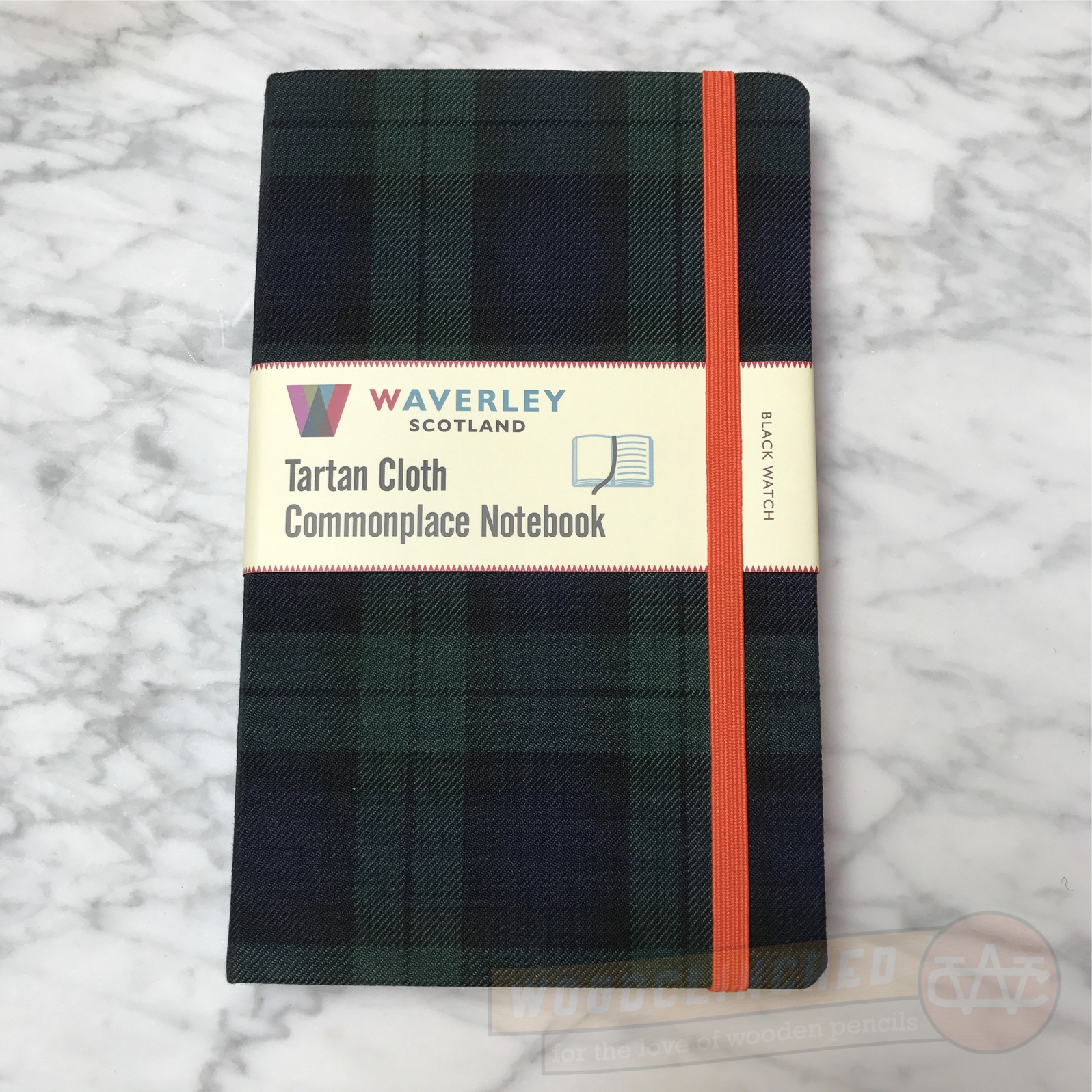
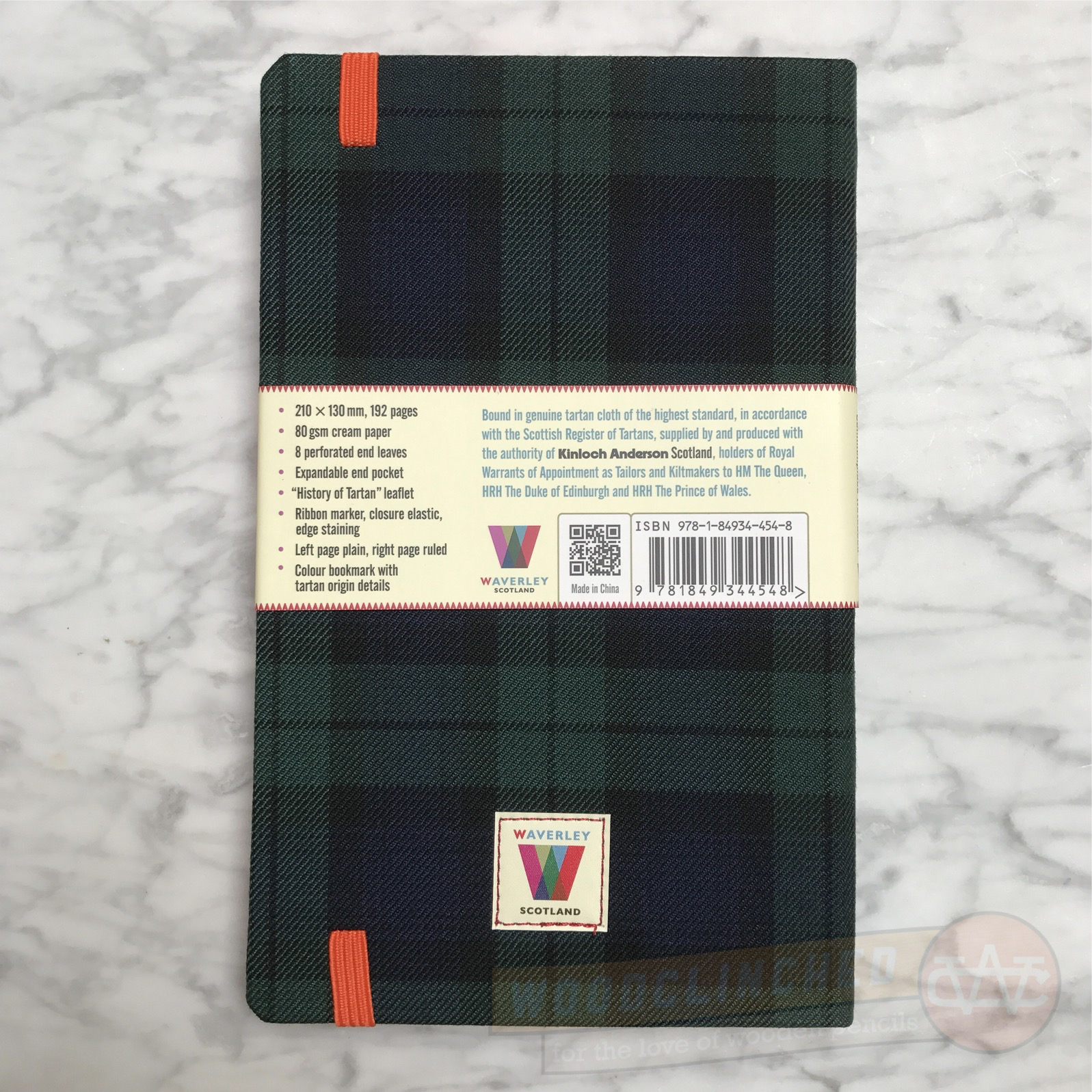
To take the attention to detail even further, the book’s elastic strap and the edge staining are in contrasting or complementary colors. For Black Watch, that’s a bright, hunter orange.
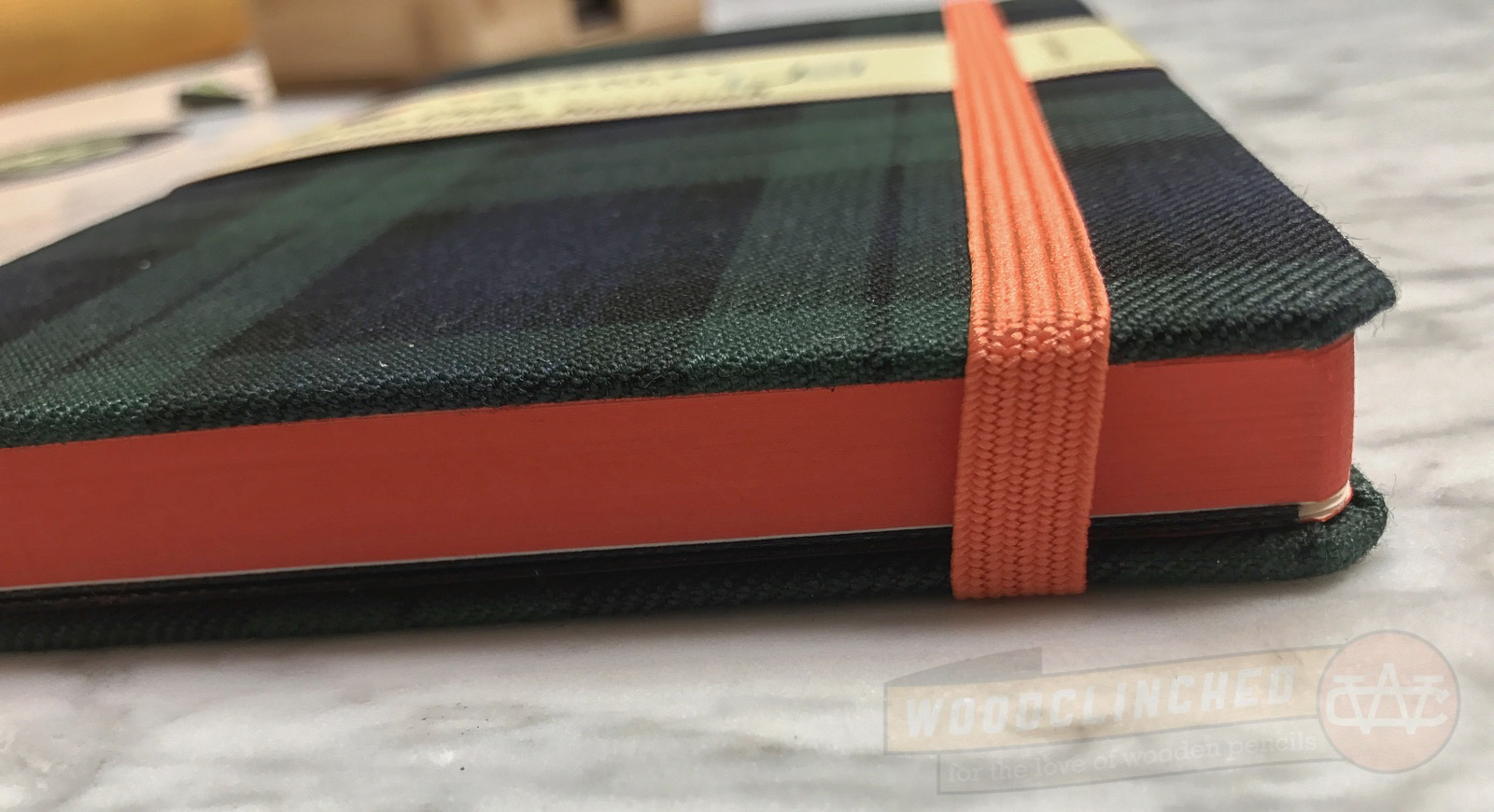
There’s also an extremely functional envelope in the back, with two different places to slip in some credit cards or cash.
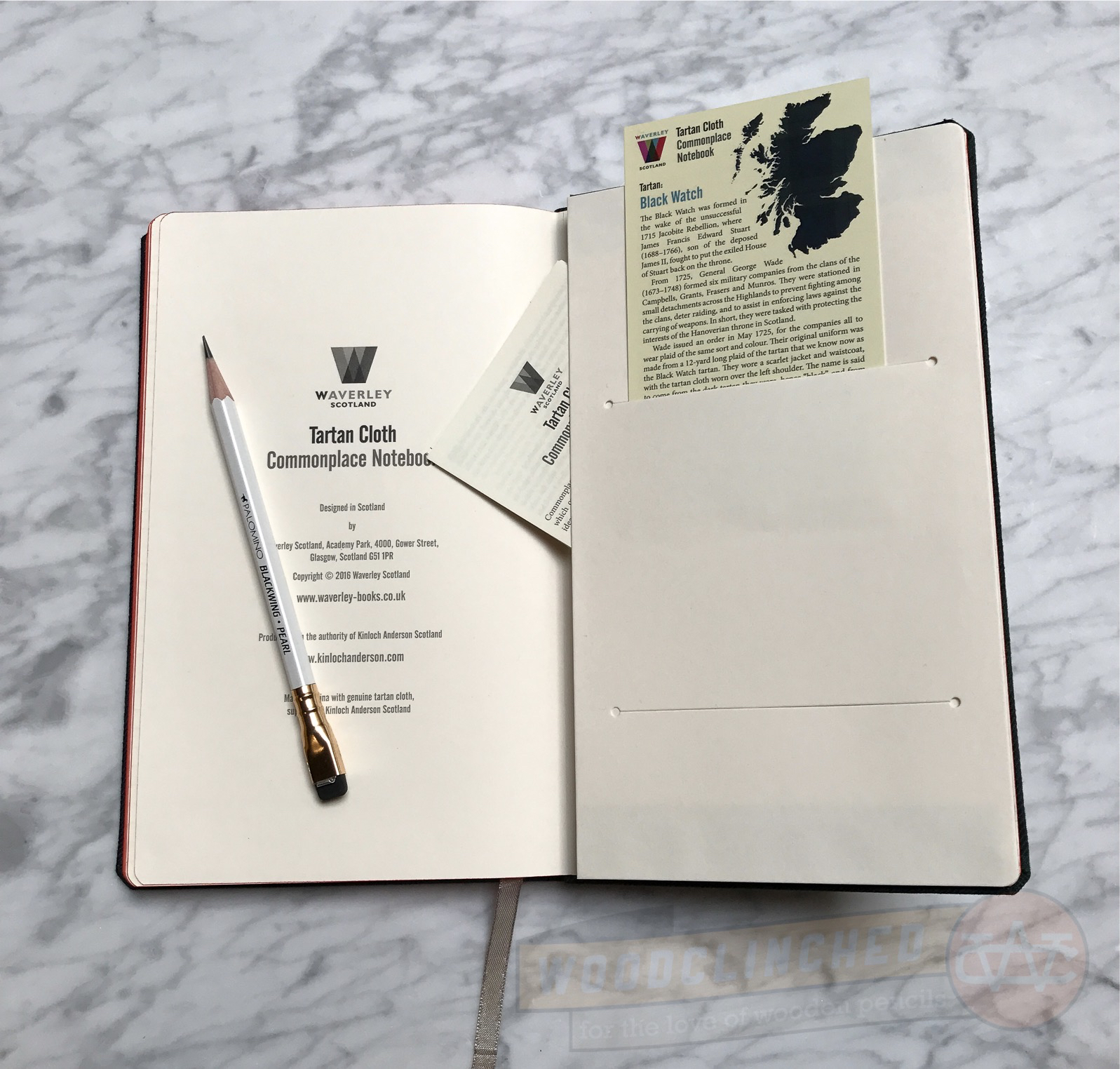
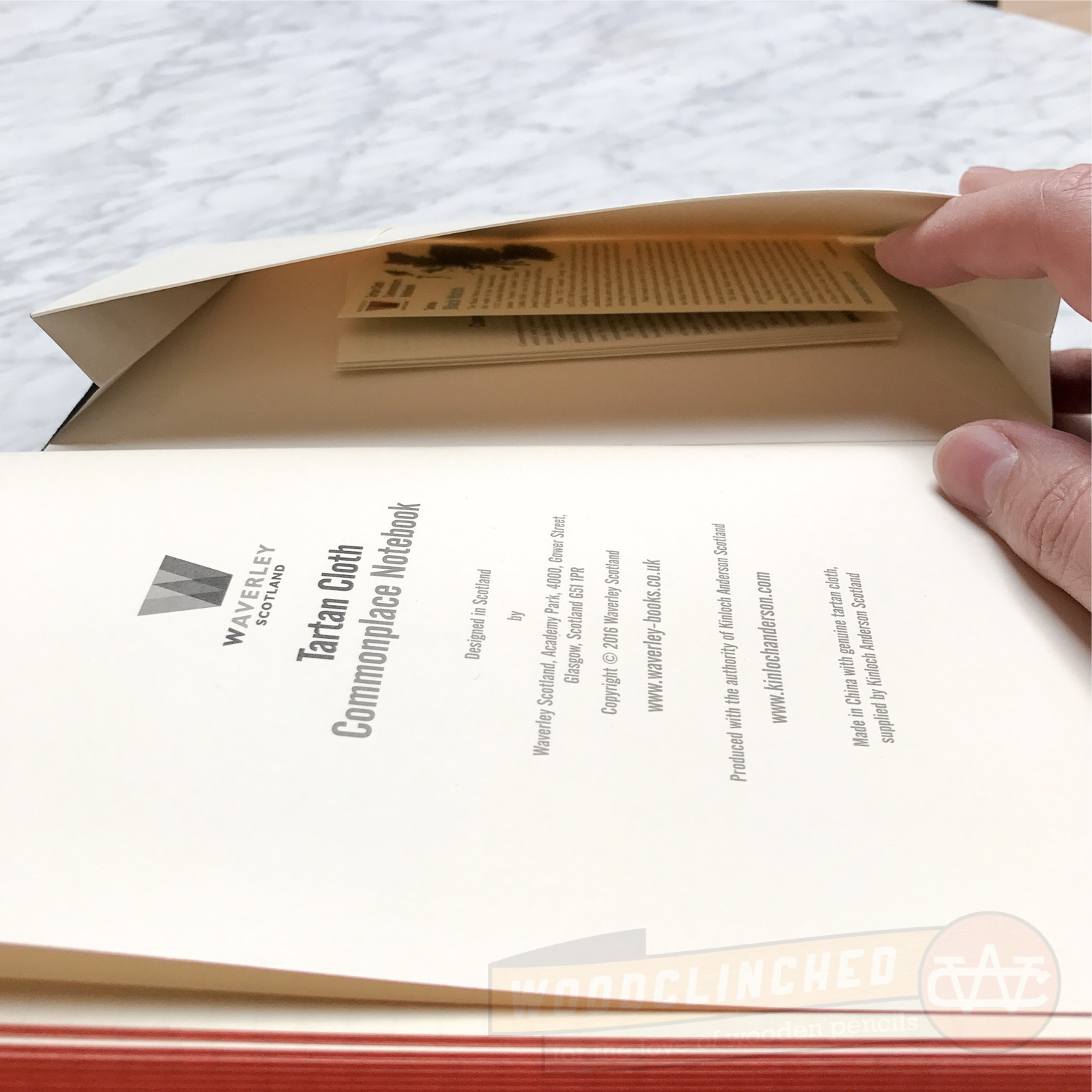 This is where things get a bit weird — the ruling. Only available in a lined format, it’s really narrow. Each line is just 5.5 millimeters tall, or 0.21 inches, for my fellow American Imperialists.
This is where things get a bit weird — the ruling. Only available in a lined format, it’s really narrow. Each line is just 5.5 millimeters tall, or 0.21 inches, for my fellow American Imperialists.
Narrow-ruled paper is usually a full quarter-inch in height, or 6.4 millimeters. This is getting into the graph paper variety, which can make it feel a bit cramped to write on.
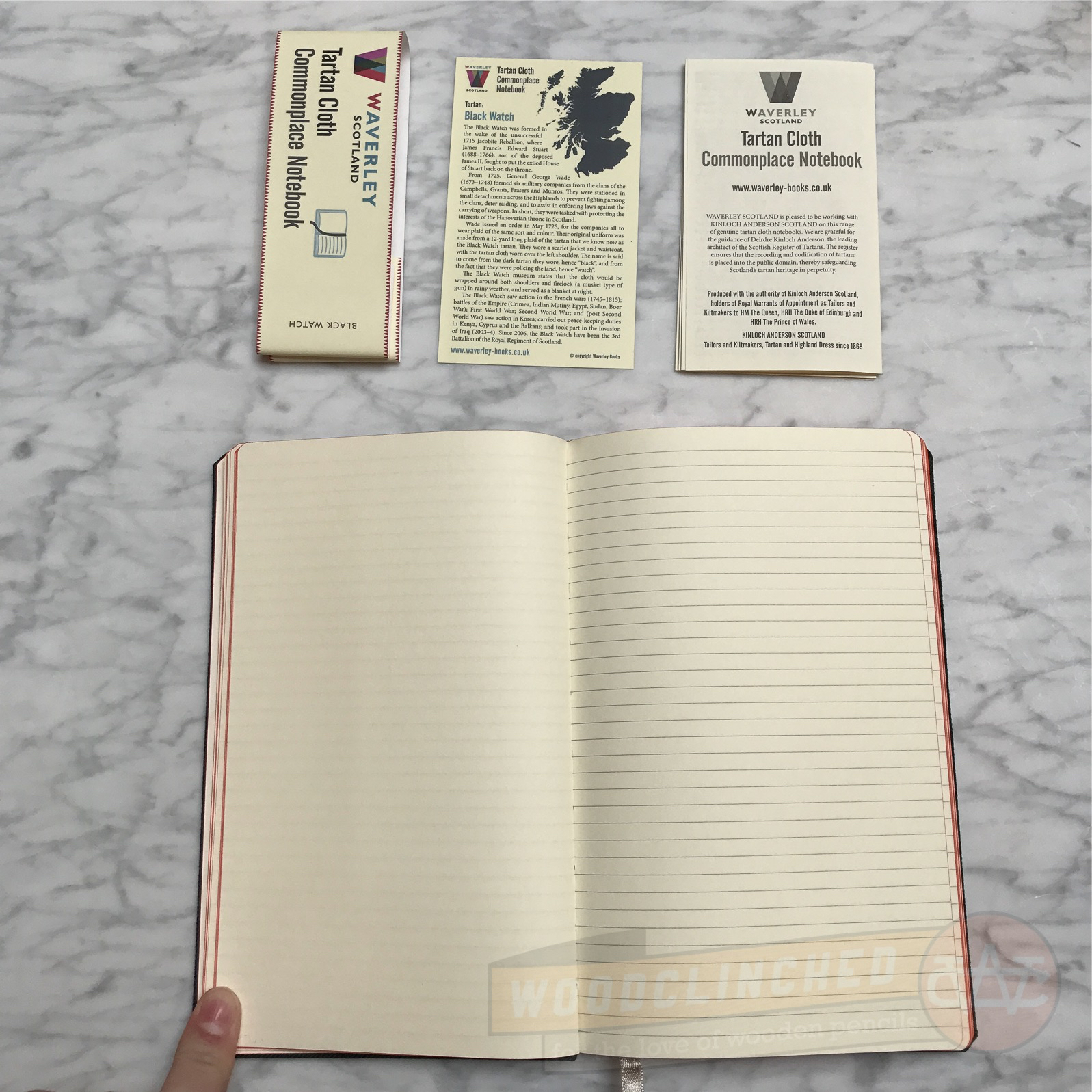
That’s not even the strangest part — the paper is only lined on the right side of the spread. The left side is blank!
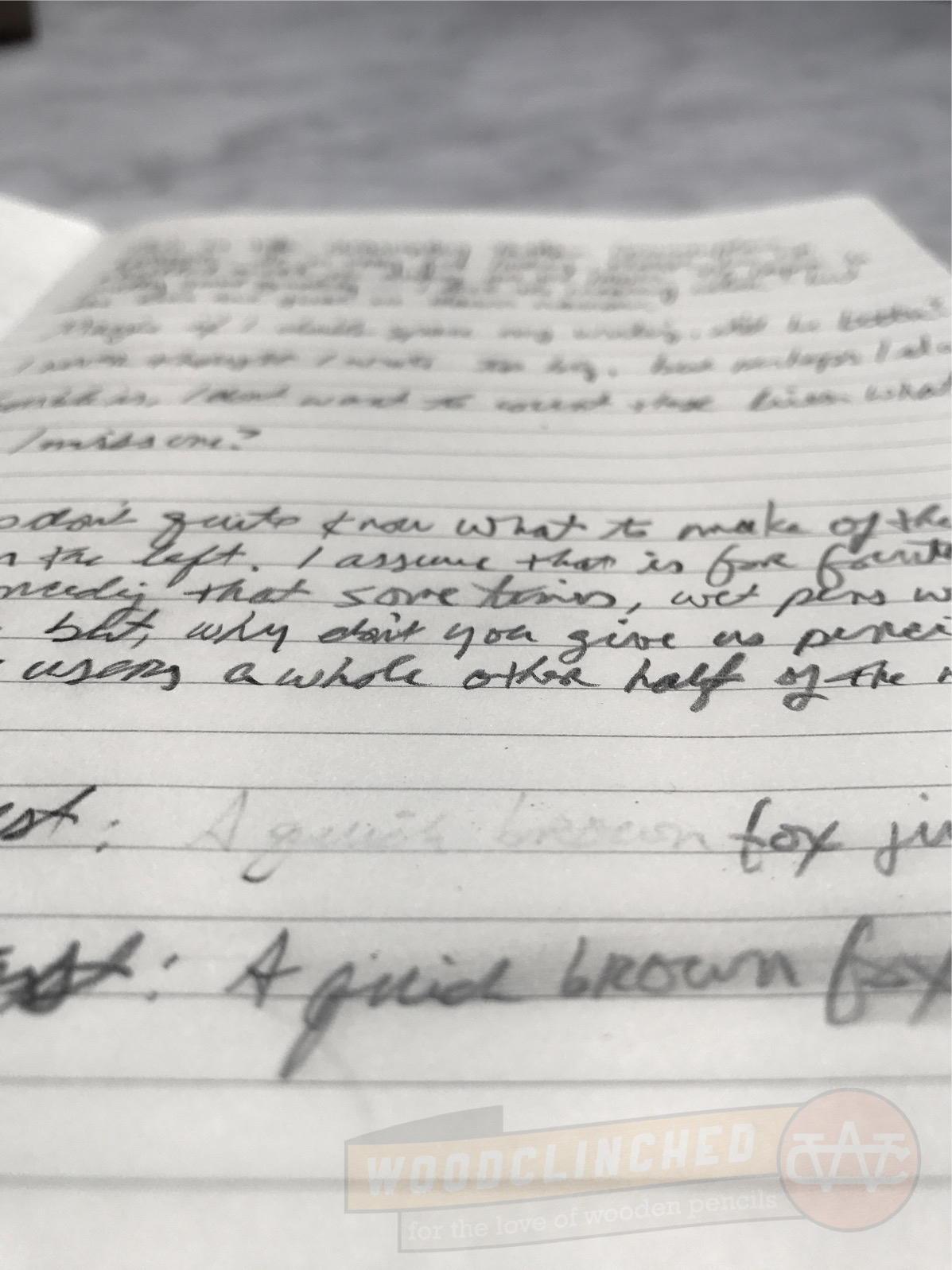
The blank page is a great way to show off the creamy 80gsm paper (a little over 20#, I believe), which is thinner than the thick, lush pages of, say, an America the Beautiful or Shelterwood edition of Field Notes, but its still really nice. It’s a fair balance between smooth and toothy — maybe leaning toward the smooth side. My pencil (I used a Palomino Blackwing Pearl) felt smooth when I was writing, and the markings both erased cleanly and smudged easily on the page.

So why the blank page?
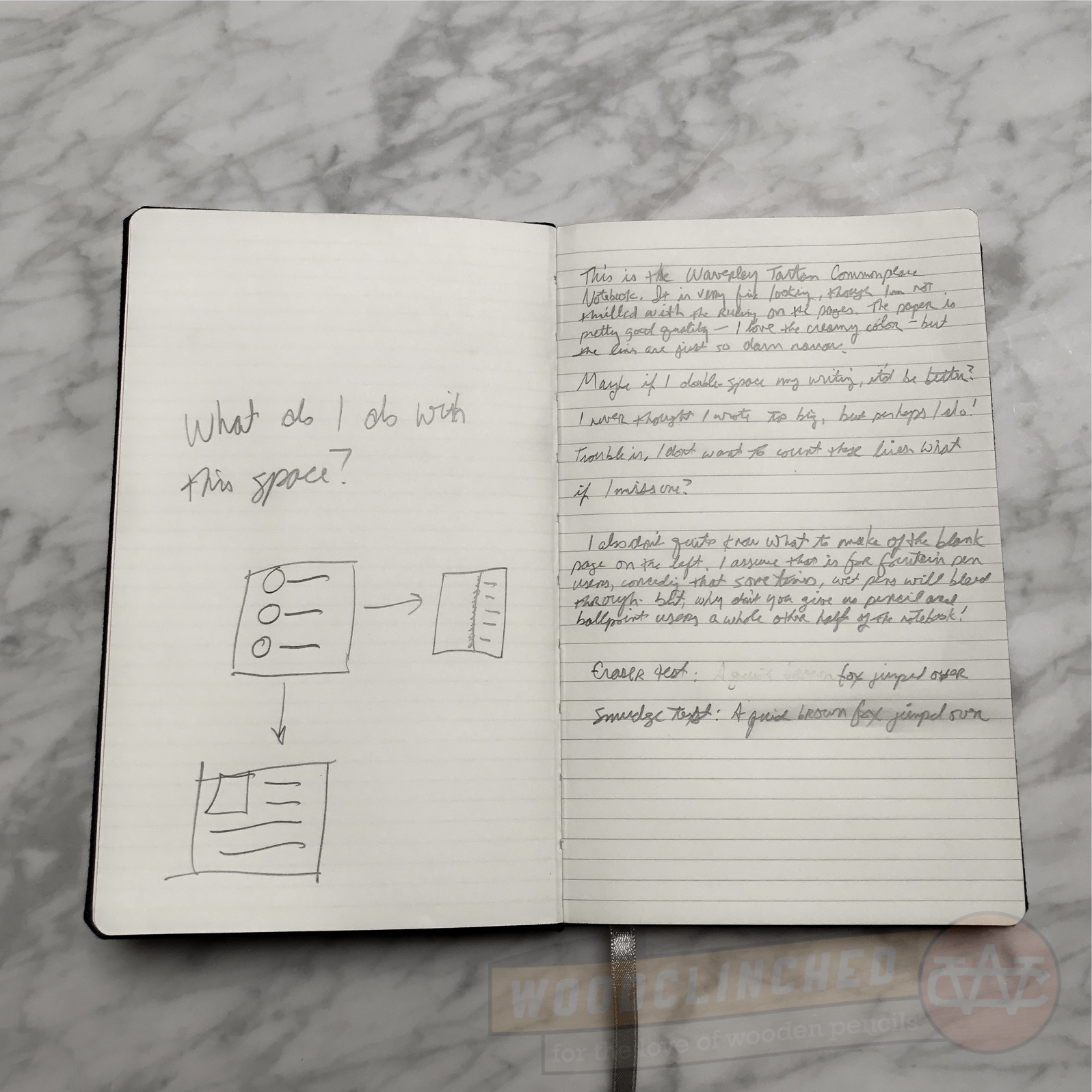
I can think of two possible reasons. Either or both could be true.
One: It’s fairly thin paper, so to solve the problem of rollerballs and fountain pens bleeding through to the other side, Waverley encourages the writer to just use the one side.
If this is the case, it makes it harder for me, a left-hander, since I’d just never have the opportunity to use the left page of the spread.
Or, two: Waverley specifically calls this a “Commonplace” notebook, which follows an ancient practice of using one book like this to collect quotes, scraps, inspiration, little pieces of thoughts and lists all under one roof.
Perhaps the left side is for sketches, pictures, paste-ins and all your non-linear words, while the right side is more for written narrative and prose.
Which one is right? I have no idea. I just think it’s an unusual choice for a notebook, though not necessarily flawed. Other notebooks like Field Notes’ Arts & Sciences were split up like that, as were Baron Figs Work/Play Confidant and its successor, the aptly-named Work/Play 2.
However, both of those were limited editions, and were meant to complement the rest of their more consistently ruled notebooks.
(And interestingly, the Baron Fig versions had the dot-grid on the left, and the blank page on the right.)
If I could get a version of this notebook with graph or dot-grid layout, it’d be perfect, and I’d be an every day user. As gorgeous as this notebook is, I don’t think its usurped my Baron Fig Confidant quite yet.
Though I’ll admit, I just want to buy one of each tartan and line my bookshelves. If I were to pick my, say, four favorite versions besides the Black Watch, they’d probably be:
If you wanted to buy one of these notebooks, head over to Waverleys website. They are out of stock of a few patterns in a few sizes (though their rep tells me theyll be restocked soon!), so if that’s the case, check out their Amazon shop, where they have a bit more selection, or their eBay store.
While you’re at it, go read Gary Varner’s blog post reviewing the smaller, pocket-sized notebook. And big thanks to Gary for alerting me to their existence in the first place!
Note: This notebook was provided to me at no cost for review purposes.
I often have people specifically ask for notebooks that have one page blank, the other page lined/graph/dot grid so I am always collecting options. It’s too bad that the paper is quite thin. While that’s fine for pencil users, fountain pen folks won’t be too keen. I do love the plaid covers though.
I know you left this comment a while ago but I thought I’d reply in case anyone reads this and wonders about using a fountain pen in these notebooks. I have tried a few different inks in my Waverley notebook and it handles them very well. I used a dark grey and there was barely anything showing through on the other side of the page, I could still use it without the fountain pen ink causing me a problem. There’s no feathering either so I’m happy to use my fountain pen in it. I hope this is helpful.
It’s Jottish. 🙂
The Waverley journals and notebooks are now available in the U.S. exclusively distributed in three sizes by Waverley West, http://www.waverleywest.net
Find them at fine bookstores and gift shops (dealers listed at the website)
I discovered those notebooks in 2018, not too long ago from now. I am a fountain pen writer. The papers holds very well to the ink. There is no bleed through nor feathering. Moreover, the paper is quite smooth. In regard to the blank page there are some options: First, the lines are shining through so that you can write on it as if it was ruled. Second you can use it for sketches and the like, the non-verbal side of writing. Or third it might be a feature to ease commonplacing: Common places, keys or headwords, headlines, cross-references can be put highly visible on the blank pages.
I discovered those notebooks in 2018, not too long ago from now. I am a fountain pen writer. The papers holds very well to the ink. There is no bleed through nor feathering. Moreover, the paper is quite smooth. In regard to the blank page there are some options: First, the lines are shining through so that you can write on it as if it was ruled. Second you can use it for sketches and the like, the non-verbal side of writing. Or third it might be a feature to ease commonplacing: Common places, key or headwords, headlines, cross-references can be put highly visible on the blank pages.
In the U.S. the Waverley notebooks and journals are available from Waverley West, http://www.waverleywest.net